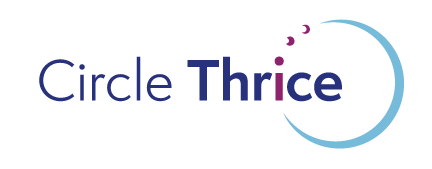Edited to add a list of all the posts in this series at the end…
This is reworked and expanded version of one of my early posts on Practical Magic Project Management: Agile Magic.
…In The Black Swan, our hero Taleb talks about the value of constant tinkering, failing fast, and shifting gears quickly. Our world moves very quickly, things change rapidly, and the best way to figure out what works is to fling a bunch of stuff at the wall and see what sticks.
 |
| For the Literal Minded |
Turns out that software development already figured this out and created a methodology to support it. It’s called Agile Development and it’s based on constant iterating, frequent feedback, and incremental change. It even has it’s own manifesto that goes:
We are uncovering better ways of developing software by doing it and helping others do it.*
Through this work we have come to value:
Individuals and interactions over processes and tools
Working software over comprehensive documentation
Customer collaboration over contract negotiation
Responding to change over following a plan
That is, while there is value in the items on
the right, we value the items on the left more.
* This line always reminds me of Cake’s “Building a Religion.”
Every indication right now — from astrology (like Austin Coppock’s 2017 preview) to the results of my own divination to, well, just about all of what passes for news — is that 2017 will benefit from this kind of approach. After all, things aren’t exactly stable anywhere right now. Plus all the normal rules seem to have been bent, twisted, broken.
This is exactly the environment where Taleb’s approach is the most beneficial and, indeed, may be the only one that will work at all.
There are times when we work on structured goals, within familiar spaces, with defined parameters. Like getting your master’s degree — you are told what classes to take, in what order, and what the cost will be. The steps are laid out, predetermined — known.
Then there are times when we don’t have the luxury of having that kind of structure. When we don’t know what to do next or even where we want to end up. Things are shifting and flexible — unknown.
I’m going to make the bold statement that we’re all in this second category right now. Not because we lack goals, but because we’re faced with navigating in unfamiliar territory. No map, however carefully crafted, can help us. We’re not navigators… we’re explorers.
Forget 5-year plans and long-term goals. This year you should strive to streamline your information, maximize your options, and experiment relentlessly to find out what works. I hereby declare that 2017 will be The Year of Being Agile and have created my own Magical Agile manifesto:
We are uncovering better ways of re-enchanting the world by doing it and helping others do it.
Through this work we have come to value:
Individuals and interactions over hierarchy and rules
Working enchantment over comprehensive philosophy
Spiritual collaboration over contract negotiation
Responding to change over following a plan
That is, while there is value in the items on
the right, we value the items on the left more.
… Tinker, pivot, course correct. Do lots of small things and check in with yourself frequently. Keep overhead low. Sign up for half a dozen seminars, shoot off a ton of sigils, spell for road opening. Spend a day gardening, volunteering, writing. Do divination for self-knowledge and data gathering. Say yes to every opportunity, but avoid major commitment. Watch for omens and subtle feedback.
Agile Method and Magic
To Light the Way
Jet-lag Update
Working enchantment over comprehensive philosophy
Spiritual collaboration over contract negotiation
Responding to change over following a plan
Active Management
Agile Risk Management, Part One
Agile Risk Management, Object Analysis, the Easy Part
Agile Risk Management, Informed Intuition, the Hard Part


